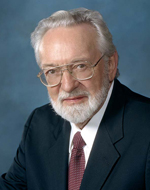


So what California has is a hybrid system. Proposition 14, which would have instituted the same system for Superior Court judges, didn’t pass, a result some historians blame on its ballot placement–right after a rejected prohibition-related constitutional amendment. As has been true with other citizen-initiated measures in the past, the state legislature jumped in with some of its own ideas once this one made the ballot. Proposition 3 was advanced, along with other ballot measures, as part of a wave of reforms to the state’s criminal justice system by citizens increasing concerned about the hyper-partisan nature of judicial contests back in those days. In 1934 California voters passed Proposition 3, resulting in the system currently in use when it comes to selecting judges for the appellate and supreme courts. Who are these people listed for California’s Court of Appeals and Supreme Court and why are we being asked to vote on them? (There’s a seventeenth contest, and we’ll get to it further down in the story.) San Diegans who have heard, read, or seen campaign materials about many candidates and propositions open up the ballot and are confounded by seeing 16 judicial contests for people they know nothing about. At least that is what I assume is going on, having researched and/or produced a half-dozen or so voter guides since 2012. The attention paid to Brett Kavanaugh’s Supreme Court confirmation hearing has made a lot of people take notice of the judicial contests appearing on their ballots. I’m hoping today’s column will answer some of the questions readers have asked in recent days.

What to do about voting for or against judges is a thing this year.


 0 kommentar(er)
0 kommentar(er)
